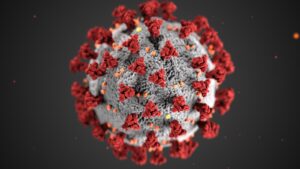On the Transmission of COVID-19 and Its Prevention
On the Transmission of COVID-19
The initial number of patients infected with COVID-19 is one, and the number of recovered patients is two. The inflection point for the disease occurs earlier than for other infectious diseases, and an increase in the rate of recovery reduces the transmission period. The infection is most likely to spread if there is an increase in the rate of treatment and recovery, and early detection is key to Prevent covid transmission of the virus.
The COVID-19 virus is most commonly found in cats, camels, and bats. It is known to jump from animal species to humans and change its form as it goes. The first humans were infected in Wuhan, China, and contracted the virus at a food market. Researchers are unsure of the cause of the outbreaks, but they suspect that the initial outbreak of COVID-19 was caused by a person eating contaminated food.
The virus is transmitted by respiratory droplets and aerosols. Symptoms of COVID-19 are similar to those of the influenza virus, except they can be more severe. A cough or sneeze from an infected person can infect a human. Because respiratory droplets and aerosols can be emitted into the air, the transmission of the COVID-19 virus is possible through close contact or the air.

On the Transmission of COVID-19 and Its Prevention
The emergence of COVID-19 has been much more severe than that of the SARS pandemic in 2002/2003. While the SARS-CoV-2 virus is a highly contagious infection, the COVID-19 virus has been particularly virulent when it is spread via the air. However, airborne transmission has been neglected in mitigation measures by governments. While WHO has stressed contact transmission as the most important method of COVID-19 transmission, the US Centers for Disease Control and Prevention have ignored the airborne route in their response to the pandemic.
Despite the lack of knowledge of the airborne route of COVID-19, it is evident that airborne transmission is a major factor in the spread of the virus. The prevalence of COVID-19 in India, Taiwan, and Italy, however, has been significantly lower than that of the USA and the UK, and there has been little evidence of direct contact with the infected persons. The infected populations in these countries are at high risk of developing the virus, and the prevention of airborne transmission is essential.
The risk of developing COVID-19 infection is increased in poorly ventilated rooms and areas where the airborne virus has been circulating for some time. It is also possible to develop antibodies and to shed the virus from the infected individual. As the incubation period is between two and 14 days, people can be infected without showing any symptoms. Therefore, the prevention of COVID-19 is essential.